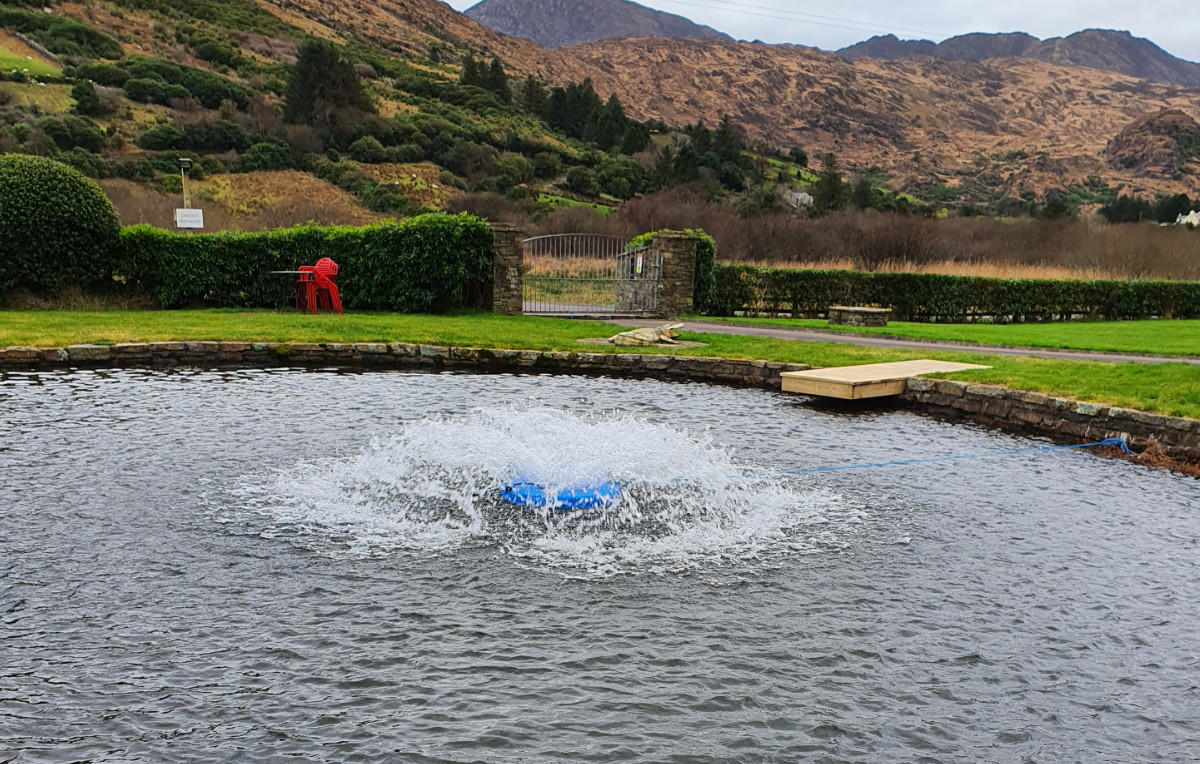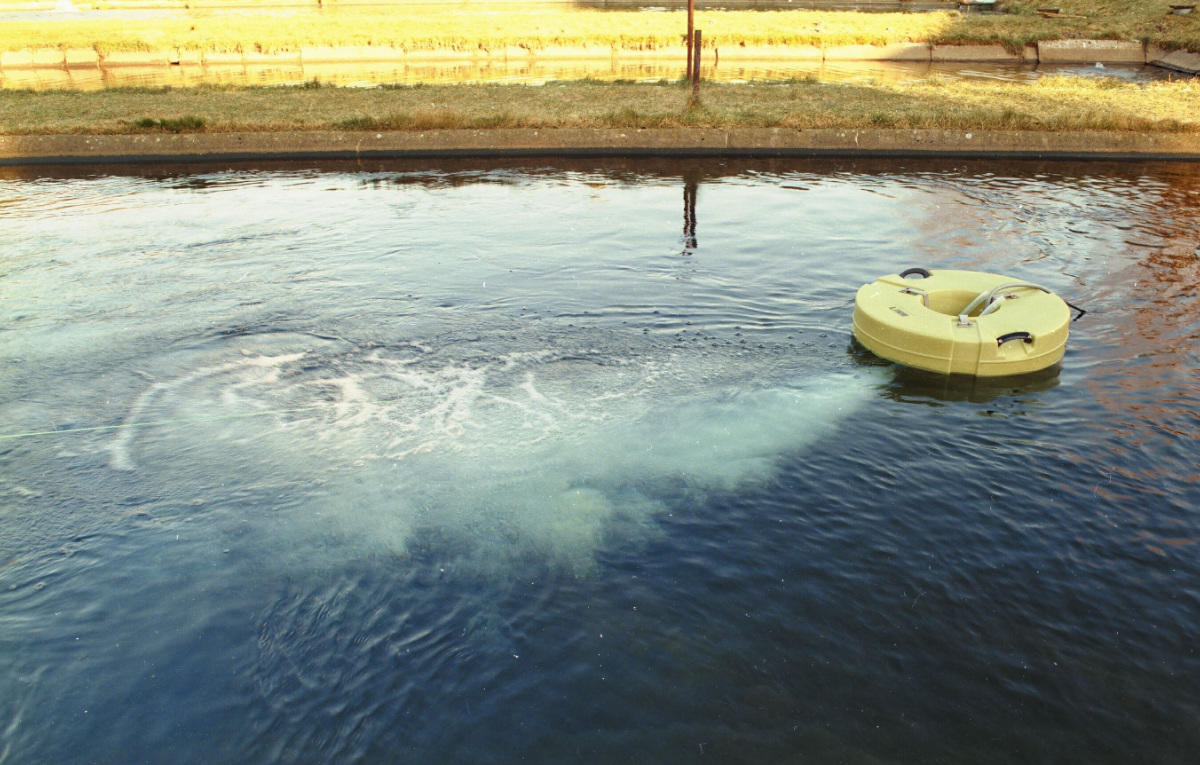- Homepage
- News and Features
- Ways to ensure your golf course's water hazards stay healthy
Ways to ensure your golf course's water hazards stay healthy
How often do we watch the USPGA or PGA golf coverage and see some form of water feature operating in the lake behind as the players take their shot?

But did you know that since the 19th Century the United Kingdom has lost over 50% of its natural and man‑made ponds with many of those still in existence in poor or unstable condition?
In this article we are looking at the management of static waters found on courses. The range includes natural or semi‑natural ponds or lakes or water bodies requiring greater management to provide an attractive habitat, suitable golfing challenge or aesthetic feature on the course.
Many of those found on golf courses, if not a natural feature in the landscape, have historic origins prior to the establishment of the course itself. Their water sources range from groundwater seepage, rainwater, springs, boreholes or they may be linked to adjacent water courses. But these sources are reflected in water quality and character that in turn defines the features within the pond.
Through the use of fertilisers, herbicides and pesticides as natural habitats were converted to agriculture, we have intervened in natural processes, which has had a damaging effect on many water bodies, both static (lentic) and moving (lotic). It is in static water bodies where this damage is most apparent as the retention time for the water is greatest, allowing many of these damaging effects to accumulate.
The mix of flora and fauna associated with a water body is dependent on factors including water quality, nutrient load, invertebrate and vertebrate component, plant and algal content, suspended solids, light penetration, temperature and many other factors.
Before considering any intervention in the management of ponds on a course, managers are obliged to investigate the conservation status of the pond and surrounding area. Any ponds within or with the potential to influence a designated site such as Site of Special Scientific Interest (SSSI) or Special Area of Conservation (SAC) under the Habitats Regulation or Special Protected Area (SPA) under the Birds Directive should be referred to Natural England for guidance.
Ponds that contain large amounts of leaf litter in the base can create low oxygen (anoxic) conditions. In such conditions the anaerobic bacteria that break down the leaf litter obtain their oxygen from other sources, such as nitrates and sulphates, with the latter process releasing hydrogen sulphide into the air and giving some water bodies that characteristic rotten egg smell. The breakdown of leaf litter and dead plants and algae by aerobic bacteria is much more rapid than that processed by anaerobic bacteria, hence the need to provide sufficient oxygen in the water for this to take place.
How does oxygen get into water? At the water surface the oxygen in the air dissolves into the water and is dependent upon a number of factors. In a stable state, oxygen slowly dissolves into water to the point where it cannot take any more and the water is said to be at 100% saturation. As water temperature increases, the solubility of oxygen drops. At 5°C freshwater contains 12.8mg/litre of oxygen, while at 20°C it contains only 9.1mg/litre. Aquatic species have evolved to occupy various niches within a water body, but without oxygen they all could not survive.
This interchange is not the only way oxygen gets into the water body. All green plants, algae and some bacteria that contain chlorophyll have the ability to photosynthesise. During photosynthesis, carbon dioxide and water are combined to produce glucose and oxygen necessary for cell growth. This can lead to super saturation during summer days when saturation levels rise to around 160%, which can harm aquatic life. This is also a double edge sword as the green matter happily produces oxygen during daylight hours, then switch to solely respiration during the hours of darkness. This process uses available sugars and creates an oxygen crash that can kill fish.

Oxygen levels are also critical in determining the availability of nutrients in the water. At low levels nutrients such as nitrogen and phosphorous become soluble and available to fuel algal growth. During summer months, when surface water temperatures are high, the solubility of oxygen is low, further compounded with low water movement. Without any form of wind or water movement, the surface layer warms up, becoming less dense and insulating the layer below, leading to thermal » stratification and contributing to the presence of algal blooms.
How can course managers treat their ponds to introduce oxygen into water bodies and create healthier conditions for aquatic life, while at the same time creating an aesthetically‑pleasing addition to the course?
Fountains are often spectacular, installed mainly for aesthetic reasons, but can also significantly contribute to water aeration. They are often installed in high profile locations and utilised during the day, when visitors are using the course. However, the need for maximum aeration to prevent oxygen crashes during the hour of darkness means it would be beneficial to leave them on throughout the night.
Another consideration is the potential for drift from high fountains, which can impact upon playing enjoyment and possible damage to ground and grasses around the lake. With increasing charges for power supply, it is imperative to consider the timing of use and power requirement for the type of fountain required. To run a 0.75kw (1 Hp) rated machine draws around 1kw and for 12 hours a day, or six months of the year at 16p per kW hour will cost around £350. For 1.5kw this is obviously £700, so managers should consider their priorities.
In order to provide adequate aeration, I would recommend machines designed specifically for this purpose. As a guide, aeration that takes place above the water surface by producing a series of smaller droplets in large volume flows is the most efficient means of mechanical aeration. The ideal is to aerate water efficiently and move that aerated water to as many parts of the water body as possible. This is of particular importance in linear lakes or those with islands or shallow waters, where large volumes of water can be hard to reach.
Machines are also available that entrain oxygen into the water system through a venturi arrangement, using the negative pressure created by water flow to suck in air and dissolve oxygen into the water, but these can be up to 35% less effective in oxygenating the water. However, the creation of significant water flow can be an adequate compensation.
Both machine types will not only aerate and move water but also disturb the stratification, allowing oxygenated water to move throughout the water column.
Both mechanical aeration and air diffuse systems are available in these formats, at least ensuring aerated refuges for aquatic life, if not across the whole water body. Air diffuse systems are particularly effective in waters of over 2m in depth, where the bubbles created by diffusers fed by an air pump has time to exchange gases in the water column as they ascend. The fan of water movement created by the drag of the ascending bubbles also has time to extend over a wider area at greater depths.
Some courses are now developing options for what can be referred to as ‘enterprise stacking’, whereby an asset is used in multiple ways to generate income, offset costs or increase appeal. For existing water bodies, some facilities have or are considering the letting of fishing rights in locations, or using arrangements that don’t conflict with the playing of the course. As the use, cost and availability of water becomes increasingly important, facilities may follow the agricultural sector in creating water bodies that allow storage using existing or new winter abstraction licences. These water bodies could not only provide an additional revenue stream but offset the costs of irrigation water for the course, while providing flood alleviation and mitigation downstream.
In a recent survey it was found that over 60% of golf courses use potable water for irrigation. Not only is this costly, but it also uses an increasingly‑scarce resource that should serve the growing population better. Grey water systems and rain water harvesting are needed now and I believe will become more prevalent in the future. Perhaps a topic for a future article.
Where to look next...
Air Water Fish
![North Middlesex Golf Club Aquapilz Special Aerator[1].jpg](https://www.bigga.org.uk/static/201f0031-5180-4e4d-94fcb582813138d5/1200x765_highestperformance_/North-Middlesex-Golf-Club-Aquapilz-Special-Aerator1.jpg)
At Air Water Fish we look to provide the solutions you need for all your aeration, fountains and pond treatment needs.
We are UK and Ireland distributors for the German made LINN range of quality aquaculture equipment including water and waste water treatment systems, monitoring and control systems, automatic feeders, transport equipment and a wider range of pumping solutions. We can also supply the OASE and KAR UK range of fountains and pond treatments.
We also supply diffused air solutions for mains power supply including the impressive KAR UK range and a range of solar and wind powered solutions for your remote ponds and lakes. As part of the Simon Moore Water Services Group we can also provide borehole, winter storage reservoirs, water treatment and an impressive range of solutions to your water needs.
Aeration is a vital part of a managed pond health, reducing algal blooms and ensuring fish wellbeing and development. Low oxygen levels can have damaging impacts well before the fish are struggling for air at the surface. The LINN range can provide solutions where both aeration and water movement is required as well as a pleasing water display.
Don’t wait for your fish or pungent water to tell you and get ahead of the warm weather this year. Call us to discuss your water problems and let us find the right solution.
[email protected]
www.airwaterfish.com
Tel: 07947 912 605
Author

